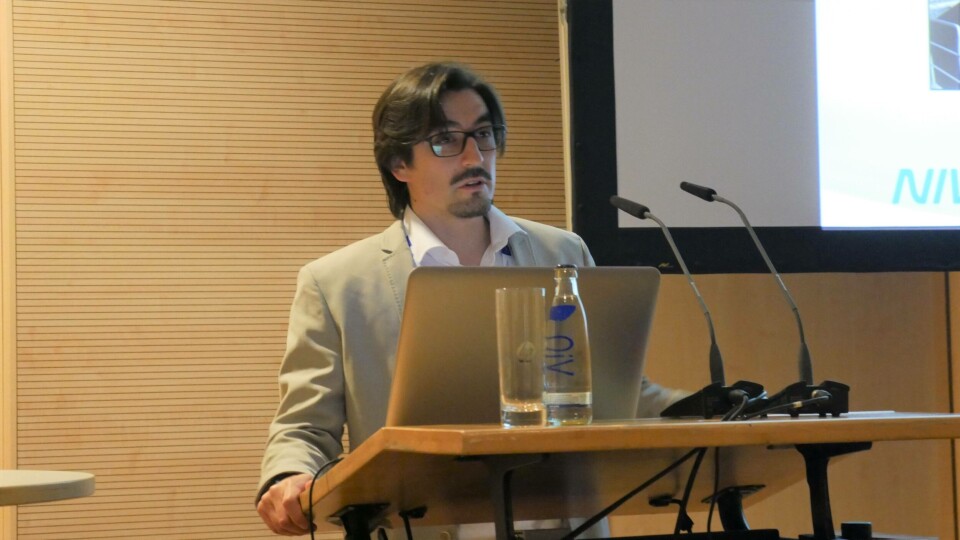
Low density better for smolts, say researchers
Researchers in Chile have developed a risk assessment for smolts that can help predict seawater performance, and points to the benefit of keeping smolt densities below 30kg per m³.
The model looks at what conditions the fish encounter during the freshwater phase in recirculating aquaculture systems (RAS) or flow-through systems, including the density of stocking and biomass, and the water quality and carbon dioxide level.
Xavier Gutierrez, manager of research institute NIVA Chile, said 70-80% of positive results for salmon farmers depended on smolt quality.
Gutierrez was speaking at the Aquaculture Europe conference in Berlin earlier this month.
Physiological condition
“Fish can have good sanitary condition but poor physiological condition, which leads to more antibiotics in the water,” said the scientist.
In the abstract for the presentation, the researchers explained that salmon farming productivity strongly relies on smolt adaptability success in the seawater environment after transference from the freshwater phase, especially during the first weeks after transfer. According to current understanding, sub-optimal water quality and physiological condition at the end of the freshwater stage are able to alter key smolt physiological traits (e.g. osmoregulation), which can be a critical determinant for further fish performance.
Even though there have been advances in smolt welfare in land-based farming, there has been a lack of quantitative tools to assess the link between fish welfare and physiological traits with subsequent seawater smolt performance (e.g. feeding rate and growth).
Water quality parameters
The researchers from NIVA Chile and the University of Tasmania analysed data from the institute’s ongoing Atlantic salmon smolt physiological monitoring program from both RAS-based and flow-through fish farms between 2015-2018 in Southern Chile.
A total of 23 consecutive fish batches of smolts were examined between three and five days before the smolts were transferred to sea.
“Our methodological approach is based on the integration of key water quality parameters at tank scale, as well as physiological blood parameters and metals concentration in target organs,” wrote the scientists.
“These parameters were sampled at tank scale, with three tanks for each smolt batch. This information from freshwater farms was integrated with feeding and survival performance of recently transferred smolt during the initial of marine on-growing phase.”
Poor feeding performance
The researchers used four types of components – freshwater farm-based information, water quality, blood parameters and heavy metal quantification (fish welfare) and seawater feeding and performance – and applied principal component analysis (PCA) and path modelling to arrive at their conclusions.
“Importantly, we confirm that high levels of water CO₂ can alter acid-base equilibrium, increasing the risk of hypercapnia, as previously reported (Brauner et al., 2000; Fivelstad et al., 2015),” wrote the researchers.
“This impaired smolt physiological condition was correlated with a poor feeding performance between 2 to 4 weeks after transfer to the sea farms. This reveals the high importance of CO₂ for the physiological status of the smolt and its further initial feeding performance in seawater.”
Fewer fish means less CO₂
“Low density – 20-30kg per m³ - is better for welfare because there is less CO₂,” Gutierrez said in Berlin.
“Higher than 30kg per m³ usually leads to poorer performance is seawater.”
The researchers say the outcomes from the study can serve as a guideline for the decision-making process to identify the risk of variables affecting fish welfare and performance. A producer, for example, will be able to prioritise and improve aspects of water quality conditions, which in turn, result in better fish physiological condition and feeding performance.
“This research line, however, highly requires a larger sampling size within the salmon farming industry in order to develop more broadly applicable tools for risk management, from a physiological approach,” they concluded.























































